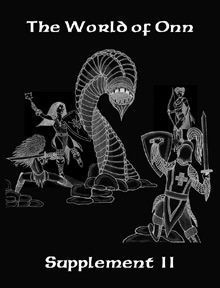Every while or so the subject of Level Limits comes up in the boards and blogosphere. Most old timers just roll their eyes at the subject and consider it ‘troll bait’ because it’s been ‘discussed before many times and at length’. Now, this isn’t a slam on any message board or blog in particular, but most of these ‘discussions’ usually boil down to rule agreers and rule disagreers who mostly think people not in their camp are the trolls baiting, with a few alternative commenters thrown into the mix. Now this may be a shock, but people that like to espouse rules-as-written for level limits are the same people in other posts that espouse how another rule is disregarded or flawed or overridden by their own houserule and it’s ok because the rules are just guidelines.
Other than the rules, why do level limits exist? To take an OD&D example, why are elves, so much a magic-inclined race, so limited in scope? Or Dwarves, revered for their martial ability and legendary toughness, stopped so quickly as warriors? One could (and has many times been mentioned) use the extended lifespan as an indicator that members of these races lack the focus to stay driven over the long years, while Men, with their pitifully short lives have a drive to achieve the other races lack. One that I personally like is that these races seemed to be powerful to early Men, because they were created whole and ‘modern’ by their deities and when Men learned how to work magic and organized war from the other races, they surpassed them. The extended lifespan could be the stagnation factor, but Men were evolved from lower forms instead of created ‘modern’, possibly this evolution also has the effect of their seemingly innate gift of unlimited potential, where the demihumans were created in the image (and therefore the limited scope) of their creator deity.
Some of the more popular examples of level limits include:
Hard Cap: Once you hit your level limit, the character is done advancement in his class(es). An option, some Referees allow one or more bonus levels based on the character’s Prime Requisite ability score.
Soft Cap: Once you hit your level limit, the character can continue to advance in his class(es), but at a slower rate usually determined by a flat experience penalty (20%, 25% or 50% are the most commonly assessed numbers I could find).
No Cap: Characters have no limits imposed on them at all, regardless of race and class(es).
Favored Classes: Races each have 1 or more classes they have uncapped advancement in. This is usually used with the Hard Cap rules, but can be used with the Soft Cap rules as well.
My own personal throw into the ring is thus:
Hit Dice Limit: Instead of limiting what level a character can achieve, limit the amount of damage he can sustain. Thus, instead of whatever level limit the game you play is using, limit the number of hit dice that character can accumulate instead (so the character stops gaining hit dice at the indicated level). This allows the character’s class abilities to continue improving, but does place a tangible limiting factor on the character at the same time. And, if you play a game that normally uses a Hard Cap Level Limit, you end up with a character of the same number of hit points. His class abilities may be greater, but the player will still gauge his combat ability in roughly the same manner.
There are many other houserules covering the Level Limit subject. It may take some sifting through the rubbish but there are gems of innovation others have come up with. Sometimes in the debate it's not about the rules that's the important thing, it's how much fun you can have playing them and modifying them to suit your group's needs.
Sunday, January 17, 2010
Subscribe to:
Post Comments (Atom)





No comments:
Post a Comment